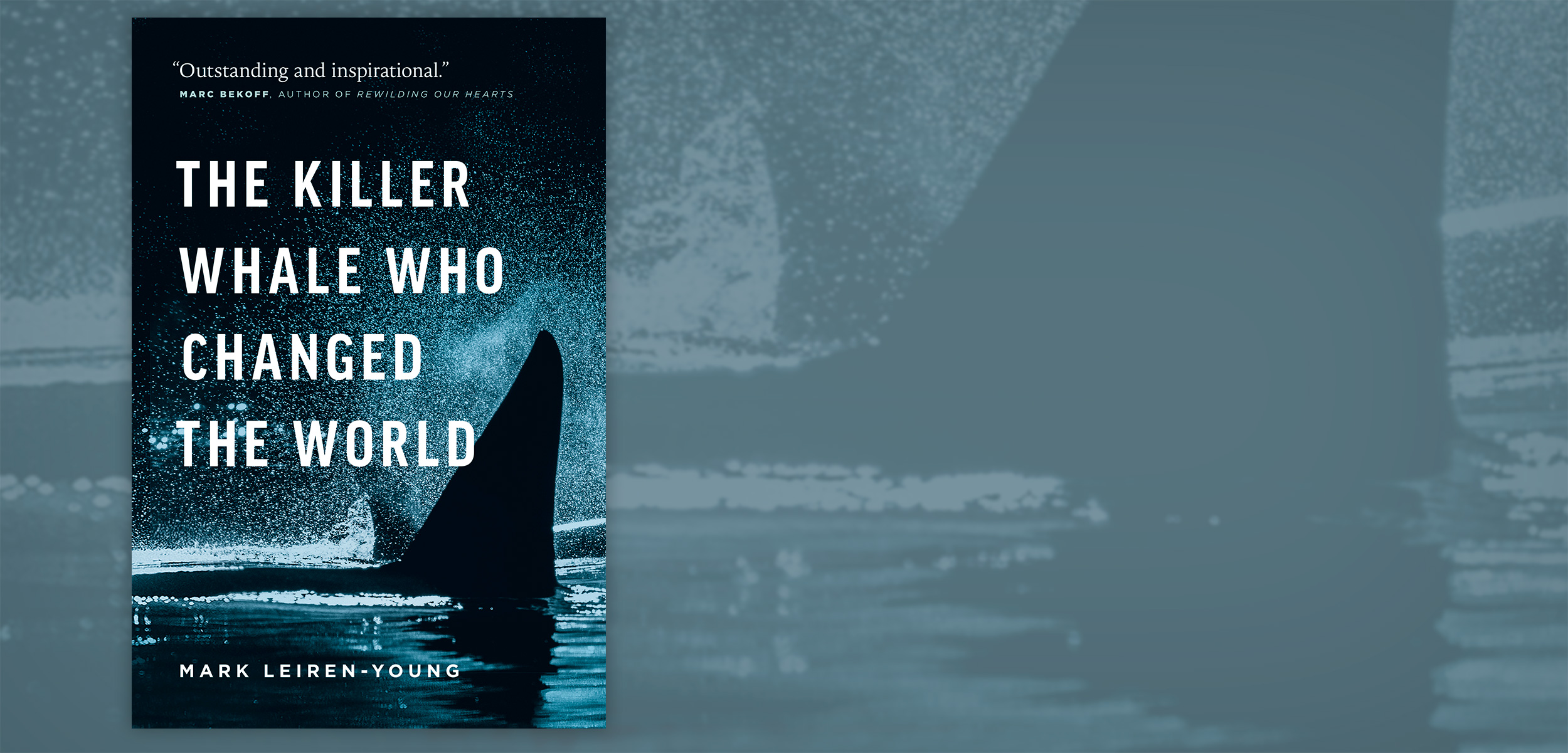Book Review: The Killer Whale Who Changed the World
Author Mark Leiren-Young traces the killer whale’s trajectory from reviled to revered.
Article body copy
Between 1964 and 1974, the marine predator Orcinus orca escaped demonization and became an icon of the then-new environmental movement. The killer whale’s transition from being perceived as a ruthless predator to being mythologized as a victim of human shortsightedness is the theme of Mark Leiren-Young’s book The Killer Whale Who Changed the World.
It’s almost impossible today to imagine that just over 50 years ago, Murray Newman, founding director of the Vancouver Public Aquarium, set out with a harpoon gun to shoot a killer whale so it could be used as a model for a life-size sculpture in the aquarium’s foyer. Yet that was the plan. After all, for generations, many species of whales had been killed along British Columbia’s coast—rendered into oil, harvested for meat, and converted into fertilizer. (On that last point, Leiren-Young describes a newspaper ad for “100 percent organic blue whale compost and soil conditioner … ideal for fine green lawns.”) But the harpoon that struck the young whale off Saturna Island in 1964 did not kill it. Instead of a corpse, Newman realized he had something more valuable: a live whale, albeit with a poorly placed harpoon and rope attached.
The public gawked. The press arrived. The whale received a folksy name: Moby Doll. And thus began, as Leiren-Young points out, a maritime gold rush as public aquariums offered CAN $70,000 rewards for live whales and bounty hunters roamed the Georgia Strait hoping to corral killer whales. Soon, dozens of captive killer whales from British Columbia and Washington State waters were installed as performing, revenue-producing attractions across North America.
It is here that Leiren-Young’s account leaves the realms of pursuit and capture and takes on a more fascinating scientific and political perspective. Greenpeace, founded in Vancouver in 1971 as an anti-war protest group, started tackling “green” issues after learning more about Moby Doll in 1974. Neurophysiologist Paul Spong, having studied Moby Doll’s huge preserved brain (she had died shortly after capture), convinced Greenpeace leaders Bob Hunter and Paul Watson that whales are extremely intelligent, social animals and should never be killed or used as performers. Leiren-Young shows how Greenpeace’s dangerous, high-seas encounters with Russia’s Pacific whaling fleet and subsequent actions by Watson’s breakaway Sea Shepherd Conservation Society brought attention to the issue of killing whales. As a result of these and other public protests, a global moratorium on commercial whaling—ignored to this day by Japan, Iceland, and Norway—was announced in 1982, and remains in effect.
Leiren-Young’s well-told story advances in a series of anecdotal scenes—sometimes tragic, sometimes emotional, sometimes scientific—as the legacy of Moby Doll reaches its dramatic culmination.
In fewer than 20 years, what began with a poorly aimed harpoon shot off Saturna Island ended in saving the world’s whales.
The Killer Whale Who Changed the World
By Mark Leiren-Young
208 pp. Greystone Books

